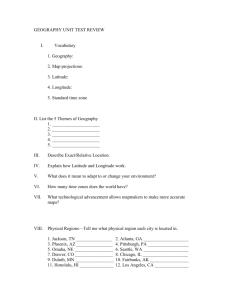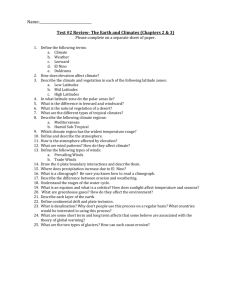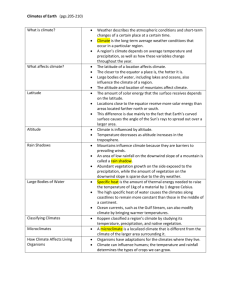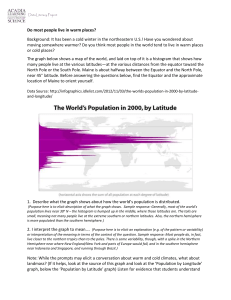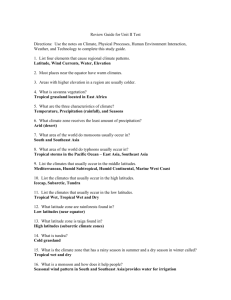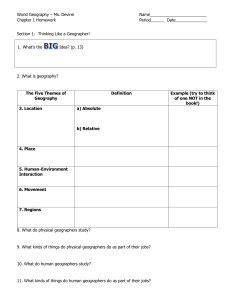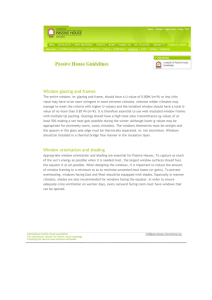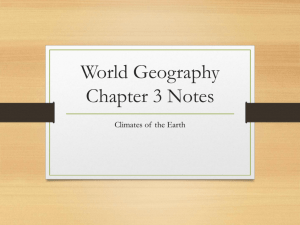Unit 1 Geography Basics PowerPoint
advertisement
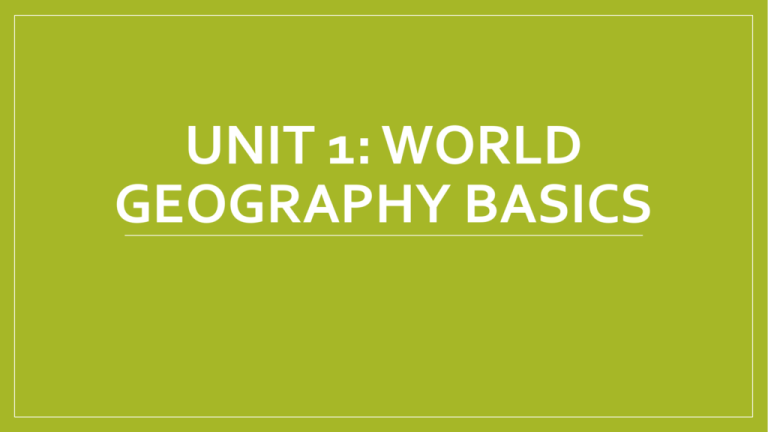
UNIT 1: WORLD GEOGRAPHY BASICS Maps vs. Globes • Map: a symbolic representation of all or part of the planet • There are a large variety of maps • Globe: is a scale model of the Earth • Globes are typically very similar Determining Location • A grid system is formed by longitude and latitude lines that help location be determined • Latitude: or parallels, circle the Earth parallel to the Equator and measure distance north/south • Longitude: or meridians, circle the Earth from Pole to Pole, measure distance east to west • These measurements are in degrees • Absolute Location: global address, naming the latitude and longitude lines that cross exactly at that place Hemispheres • Hemisphere: on of the halves into which the Earth is divided • Northern/Southern divided by the Equator • Equator: is measured at 0 degrees latitude • Eastern vs Western is divided by the Prime Meridian • Prime Meridian: is measured at 0 degrees longitude Reading a Map • Key/Legend: a list that explains the symbols, colors, and lines used on the map • Scale: shows the relationship between map measurements and the actual distances on the Earth • Compass Rose: indicates direction • Cardinal Directions: north, south, east, and west • Intermediate Directions: northeast, northwest, southeast, southwest Map Types: Physical Maps • Physical Maps: shows the location and the shape of the Earth’s physical features • Topography: the study of surface shape and features of the Earth • Majority show changes in elevation in a region Map Types: Political Maps • Political Maps: maps that show the boundaries and locations of political units such as countries, states, countries, cities, and towns • HUMAN MADE rather than nature • No tangible border Map Types: Thematic Maps • Thematic Maps: maps that emphasizes a single idea or a particular kind of information about an area • Two Types • Qualitative Map: maps that use colors, symbols, lines or dots to show information • Flow-line Map: maps that illustrate movement of people, animals, goods, and ideas Section 2: Common Terms, General Focuses, and Research Methods Places/Regions • Place: a particular space with physical and human meaning • ex. Great American Ballpark • Regions: areas with similar characteristics ex. Central America • Formal Region: is defined by a common characteristic, such as a product produced their • ex. The Corn Belt • Functional Region: a central place and the surrounding area linked to it • Ex. Springfield • Perceptual Region: defined by popular feelings and images rather than by objective data • ex. The “Heartland” Physical Systems and Human Systems • Physical Geography focuses on the Earth’s physical features • Physical Maps • They often study ecosystems • Ecosystems: is a community of plants and animals that depend upon one another, and their surrounding, for survival • Human Geography focuses human activity and their relationship to culture and the physical environment • Study the movement of people, goods, and ideas • Focus on politics, economics, population growth etc. Environment and Society • Human-environment interactions: the study of the interrelationship between people and their physical environment • Often this interaction is negative for the environment • Ex. ????s Research Methods in Geography • Direct Observation • Mapping -Cartography: designing and making maps • Interviewing • Analyzing Statistics Topics we will study/examine • Economy • Culture - language - Art -Customs • Education • Political System SECTION 3: GLOBAL DIVERSITY Climate and Weather • Weather: the condition of the atmosphere in one place during a limited period of time • Short term aspect of climate • Climate: the term for the weather patterns that an area typically experiences over a long period of time • Ex. Seattle, Washington Revolution and Rotation • The Earth rotates on its axis, and revolves around the sun • Earth’s Axis: an imaginary line running from the North Pole to the South Pole through the planet’s center • Equinox: Meaning “equal night”, Around March 21 the sun’s rays fall directly on the Equator causing night and day to have equal hours Latitudes, Elevation, and Climates • Low Latitudes: Area between 30 degrees South and 30 degrees North • Places located in these latitudes have warm/hot climates • Midlatitudes: Area between 30-60 degrees North and 30-60 degrees South • Experience dramatic seasonal weather changes Latitudes, Elevation, and Climates • High latitudes: Area between 60-90 degrees North and 60-90 degrees South • Places located in these latitudes have cold climates • Arctic Circle: latitude 66.5 degrees North • Antarctic Circle: latitude 66.5 degrees South Wind and Ocean Currents • Prevailing winds blow in fairly consistent patterns • Warm air from the Equator moving towards the Poles • Cold air from the Poles moving toward the Equator • Coriolis Effect: is defined as how a moving object seems to veer toward the right in the Northern hemisphere and left in the Southern hemisphere. • Causes prevailing winds to move diagonally Climate Regions • Topical Climates: found in or near the low latitudes • Think Rainforests • Tons of natural vegetation • Dry Climates: found in the low/mid latitudes • Think Deserts • Little to no natural vegetation Climate Regions • Midlatitude Climates: Largest variety of climates • Think 4 Seasons • High-Latitude Climates: Freezing temperatures • Little to no natural vegetation • Permafrost: permanently frozen subsoil

